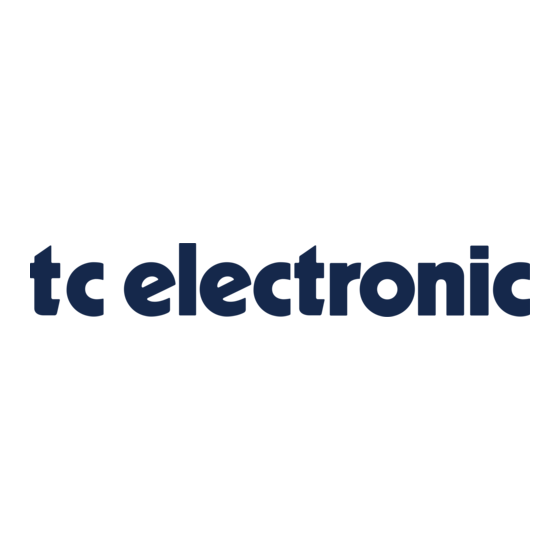
Advertisement
Table of Contents
SYSTEM 6000 & DAW INTEGRATION
Introduction
Your digital audio workstation is perfect for editing, mixing and synchronizing audio, video and MIDI. It
might even come with a dozen funky effects. But what about the final touch, the "real gold", because
you have grown tired of imposters?
The latest hard- and software upgrade for your DAW does not lead to the end of the rainbow either.
Under the hood you will still find processing designed for generic purpose rather than the ultimate.
Among the plug-ins you will surely find no Reverbs requiring 30 man-years of development time, plus
specialized hardware with exotic DSP infrastructure and extravagant memory bandwidth to run. This
is exactly what Reverb6000 is.
Reverb6000 is the highest quality, no compromise effects-processor you will find on the market today.
In this box you'll find reverbs and effects in a quality you will never be able to achieve with any DAW
system plug-in - and no matter if it is for Stereo or multi-channel productions.
Reverb6000 is at the same time very easy to physically integrate with any DAW, and the entire
control interface can be running from the same computer and monitor as your DAW, using the TC
Icon Mac/PC editor software application.
In the following sections you will find examples on how to set up Reverb6000 in today's most
common DAW systems.
General notes for all examples:
• The TC Icon Mac software editor is compatible with Mac OS 9.2 or higher, including OS-X.
• The TC Icon PC Software Editor is compatible with Windows 95, 98, 2000, NT, ME and XP.
• Reverb6000 has eight AES/EBU I/O channels as standard in one Mainframe. The RME ADI-8 DD is
solely in the examples to make format conversion between AES/EBU and ADAT or TDIF
connections, while ADAT and TDIF are still the most common standards on soundcards and DAW
systems. If you have AES/EBU I/O's available, the RME ADI-8 DD is not required.
• More in-depth information on the RME ADI-8 DD can be found on www.RME-audio.de
• Reverb6000 can optionally be fitted with 6 high-quality analog I/O's or additional 8 channels of
AES/EBU I/O's. Connections for these optional I/O's are not included in the examples.
• The illustrated MIDI interface connection between Reverb6000 and your DAW is not required to
operate Reverb6000. The MIDI interface connection can be utilized to integrate with your
sequencer in your DAW system, enabling full program change and parameter control automation
directly into your sessions.
Advertisement
Table of Contents

Subscribe to Our Youtube Channel
Summary of Contents for TC Electronic Reverb6000
- Page 1 - and no matter if it is for Stereo or multi-channel productions. Reverb6000 is at the same time very easy to physically integrate with any DAW, and the entire control interface can be running from the same computer and monitor as your DAW, using the TC Icon Mac/PC editor software application.
- Page 2 Digital Audio Workstation. • Soundcard (internal or external) with ADAT or TDIF I/O connections. • Reverb6000 Mainframe. • Mac or PC TC Icon software editor for Reverb6000. • RME ADI-8 DD interface. • MIDI interface (internal or external) for sequencer automation.
- Page 3 Digital Audio Workstation. • ADAT or TDIF external I/O box (connected to DAW). • Reverb6000 mainframe • Mac or PC TC Icon software editor for Reverb6000 • RME ADI-8 DD interface • MIDI interface for sequencer automation. Setup and connections: 1.
- Page 4 • Mac or PC with Ethernet connection running ProTools LE • DIGI 001 • Reverb6000 mainframe • Mac or PC TC Icon software editor for Reverb6000 • RME ADI-8 DD interface Setup and connections: 1. The TC Icon Mac/PC software editor *) must be installed...
- Page 5 • Mac or PC with Ethernet connection running ProTools LE • DIGI 002 • Reverb6000 mainframe • Mac or PC TC Icon software editor for Reverb6000 • RME ADI-8 DD interface Setup and connections: 1. The TC Icon Mac/PC software editor *) must be installed...











Need help?
Do you have a question about the Reverb6000 and is the answer not in the manual?
Questions and answers